The Magic Flyboy
The human fly-collector, sitting on the river bank near a Simulium breedings site, is the Gold standard for assessing vector biting rates: Daily, Monthly and Annual Biting Rates on man (DBR, MBR and ABR). For this, a team of fly-collectors works from dawn to dusk, to catch all flies that come to land during the hours of fly-biting activity.
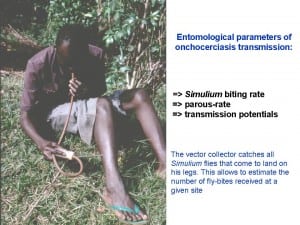
Simulium fly-collector catching blackflies landing on his legs
During his work, the fly collector exposes his legs and catches all landing Simulium flies with the help of an exhaustor (“pooter”). This is not very difficult, as the flies take 1 to 3 minutes to finish a bloodmeal. Once settled on the skin, they are not easy to disturb and they prefer to be caught than to fly away. Therefore, the number of flies caught quiet exactly represents the number of bites that one person would have received at this place.
In theory, all flies should be caught before they start probing. It happens however, that some of the flies are noticed too late. During our experiments, we found during dissection that about 7 % of all flies brought in by the fly-collectors had ingested some blood, very little in most of the cases. This blood could also stem from an interrupted meal that the fly took before coming to land on the fly-collector. However, there is a risk of onchocerciasis transmission and therefore, attempts have been made to replace the human bait by an automatic trap: the ‘Magic Flyboy‘.
After a series of experiments, evaluating the efficacy of single cues (=> optical cues in combination with movement, warmth, odor – smell of sweat and CO2) a trap was designed, combining optical cues (colorfull umbrella), smell (CO2) and warmth (hot water in rubber boots).
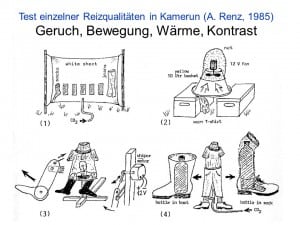
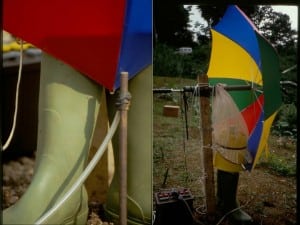
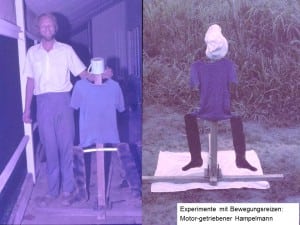
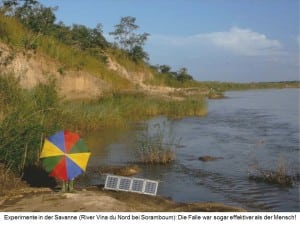
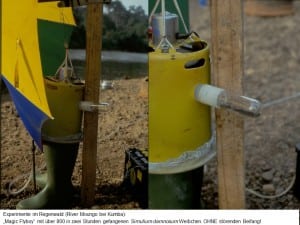
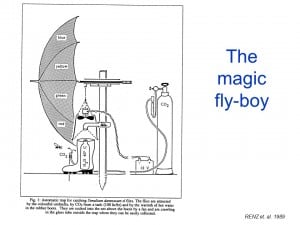
The flies were attracted by the sight and smell, turned around the rubber boots, tried to feed (unsuccessfully, of course) and were trapped by an electric fan, situated above the boots.
This trap was found to be as efficient as a human bait in attracting and catching Simulium damnosum s.l. in the rainforest and savanna in Cameroon.
In a series of experiments, 4,514 Simulium damnosum s.l. were caught in the trap, against 5,179 flies caught on man. In the savanna, the trap was even more efficient that the human collector, 77 flies being caught in the trap against 63 caught on man.
Despite its high efficiency, the need of CO2, of a 12V electric power supply and of the warm water-bottles in the boots, made his trap too expensive to replace the human fly-collector. Experiments are under way to improve this trap and to develop other traps, especially with a view to catch flies attracted to a cattle bait.
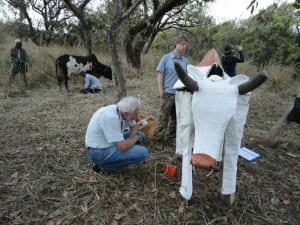
cow-trap for catching Simulium damnosum attracted to cattle (the ‘Magic cow‘)
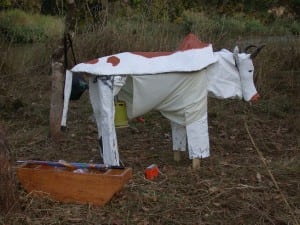
Much in contrast to the biting behaviour of the flies on man, where they tend to bite below the knees, the same flies are attracted to the belly of cattle, where they take their bloodmeal usually near on the inguinal area, which is only slightly covered by hairs and thus facilitates the access of the feedings fly’s mouthparts. Therefore, the electric fan is situated on the belly, imitating the umbilicar region.

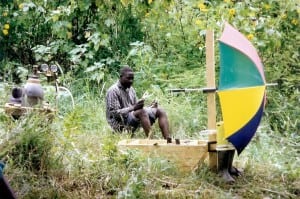
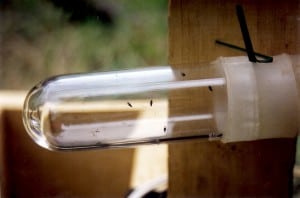

Leave a Reply
Want to join the discussion?Feel free to contribute!